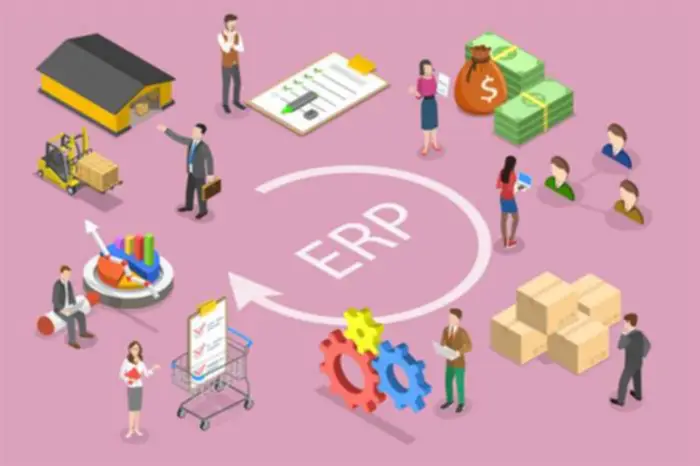On the other hand, workers working for a med-tech organization digital trust definition will care that the group has a zero-tolerance policy to roll-out inferior digital products which directly impression human life. Stakeholder data and privateness expectations are also escalating by the day as customers develop more cautious about how companies use their knowledge and adhere to growing privacy regulations. However you slice it, digital trust is about good technological stewardship that protects buyer data. McKinsey’s survey stories that customers care about firms having an “ethical and trusted reputation” practically as a lot as worth, high quality and convenience. Indeed, 53% of customers will solely purchase from companies with a popularity of protecting buyer data; this figure increases to 65% for those buying for his or her organization. Open and clear communication is fundamental to constructing and maintaining digital belief.
Building Blocks Of Digital Trust
Digital belief is crucial for innovation, enabling individuals and organizations to take risks and take a glance at new issues. Confidence is important for folks to hesitate to adopt new applied sciences or attempt new services, which might stifle innovation and limit progress. Digital id is crucial for on-line services, similar to banking and e-commerce, and for accessing government providers, corresponding to tax returns or voting. Organizations must implement safe authentication techniques, such as two-factor authentication, to guard https://www.globalcloudteam.com/ their users’ digital identities. Additionally, people have to be educated on protecting their digital identities through the use of strong passwords and avoiding phishing scams. Digital id is becoming increasingly necessary today as more and more companies are online.
Obtainable: C-suite Playbook On Cybersecurity And Privateness
- The technologies fueling digital transformation can each construct and erode belief, convey benefits or risks to society.
- Today, 1000’s of people take pleasure in peace of mind understanding there’s an easy, secured monitoring system working to ensure their pacemaker continues to perform and alerting them of any potential issue.
- Operations, with datacenters at their core, verify certificate status by way of OCSP or different protocols.
- With know-how now at the coronary heart of business, safeguarding it’s tantamount to safeguarding the enterprise.
- To counter this, the general public sector needs to design trendy, social, technical techniques constructed for belief.
While predictive analytics can be used for highly sensitive, huge influence points like clever job matching, assessing eligibility for social advantages, or sentencing in courtroom, they need a human being in control alongside. The public is not going to settle for that such decisions are made autonomously by an algorithm alone. Citizens usually specific issues that elevated information sharing means giving up control, exposing our information to malicious forces. The new logic says, as a substitute, we should always make investments the money to ship a good return.
Is Your Most Precious Data At Risk?
Suppose you’ve a enterprise mannequin like Google or Facebook that depends on promoting or monetizing information. You will must be significantly vigilant, mainly when incidents occur—the extra clear and genuine, the better. Technology affords a possibility, however the worth is unlocked by the folks and processes married to the know-how. I do not know about you; after I take into consideration whether or not I ought to click on on a link or purchase from a selected online vendor, I wonder if I can belief the supply, not the underlying know-how. The Digital Trust Ecosystem Framework and COBIT work properly in tandem, with every taking part in a major function in permitting organizations to build a stronger foundation for achievement.
Why Digital Belief Is Now A Key Economic Driver For Digital Transformation (dx)?
The tempo of business reinvention and innovation using expertise is not slowing down. Not when 40% of CEOs suppose their companies might now not be economically viable a decade from now in the event that they stayed on their current path. 6x extra likely to have already applied transformative cybersecurity initiatives from which they’re realising advantages. Digital trust have to be managed through checks and balances like another strategic initiative. The multiple strains of defense we use today for threat administration is an excellent model.
Cyber Risk Administration: Ripe For Reinvention
Although there are numerous types of digital trust, the main target here is on the function that C-suite leaders can soak up defending digital trust as a crucial organizational asset. As the cyber threat landscape continues to evolve, challenging executives to dynamically pivot, there are 5 actions leaders can take today that enable organizational resilience and finally strengthen digital trust. In the identical way, why do some people trust a hard drive beneath their desk at residence, more than the cloud guarded by armies of safety engineers? Why do they belief planes lower than vehicles, although planes are demonstrably safer? For most, the notion that we’re giving up management to a fancy system is outweighed by evidence of reliability and security, economies of scale, and convenience.
It’s like having sturdy locks and alarms to protect your important info from unhealthy people. Many industries have carried out strict rules related to knowledge protection and privacy (e.g., GDPR in Europe and CCPA in California). PKI helped be sure that on-line interactions had been secure by checking who you might be, keeping your data private, and ensuring information wasn’t tampered with.
In our 2022 survey we found that CEOs specifically had been very concerned that their organisations had become too complex to secure. At that time, 32% had consolidated technology distributors in an effort to simplify, in addition to realign their mixture of managed and in-house services. ASU’s ISDT leads work and initiatives that uniquely affect our constituents’ experience of digital life. We purpose to lead by instance with our own dedication to digital belief by providing transparency and readability around our practices that require trust. If we build upon the car security (trust) example, we are going to begin to notice similarities.
For access to greater than 3,000 digital belief professionals’ insights on AI, view the 2024 AI Pulse Poll infographic. The 60-minute, self-paced on-line course explores digital trust ideas and DTEF elements. During the course, individuals will outline digital belief, discover its worth and impression on organizational success, summarize the parts of the DTEF, and describe the nodes and domains that comprise the DTEF. In its latest “State of Digital Trust” analysis report, ISACA dug into the developments powering this transformation. Organizations right now more and more rely on an online presence and digital communications to connect and conduct enterprise.
Furthermore, an Irish bank’s ATMs malfunctioned, distributing cash with out verifying customers’ account balances, elevating considerations in regards to the reliability of economic techniques. To counteract these threats and reinstate digital trust, the implementation of stringent security measures is imperative. These measures may embody encryption, multi-factor authentication, and the adoption of advanced fraud prevention technologies—all aimed toward safeguarding sensitive data and digital assets from malicious actors. The Internet of Things (IoT) refers to the network of linked gadgets speaking with one another and the internet.
It is what enables us to construct, participate in and develop this linked world that we now reside in. It is the thing that allows us all to have confidence that the issues we are doing online — whether these are interactions, transactions or enterprise processes — are safe. Focusing on the key components of constructing reliable relationships between enterprises and shoppers, the Framework addresses three conventional components (people, process, and technology), and adds a fourth critical component (organization). It incorporates detailed practices, activities, outputs, controls, KPIs and KRI’s, offering practitioners with a complete toolkit for implementation and evaluation.






